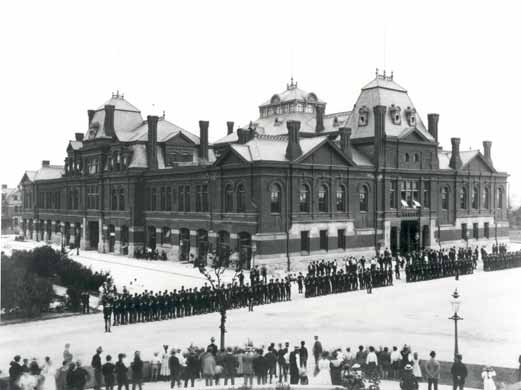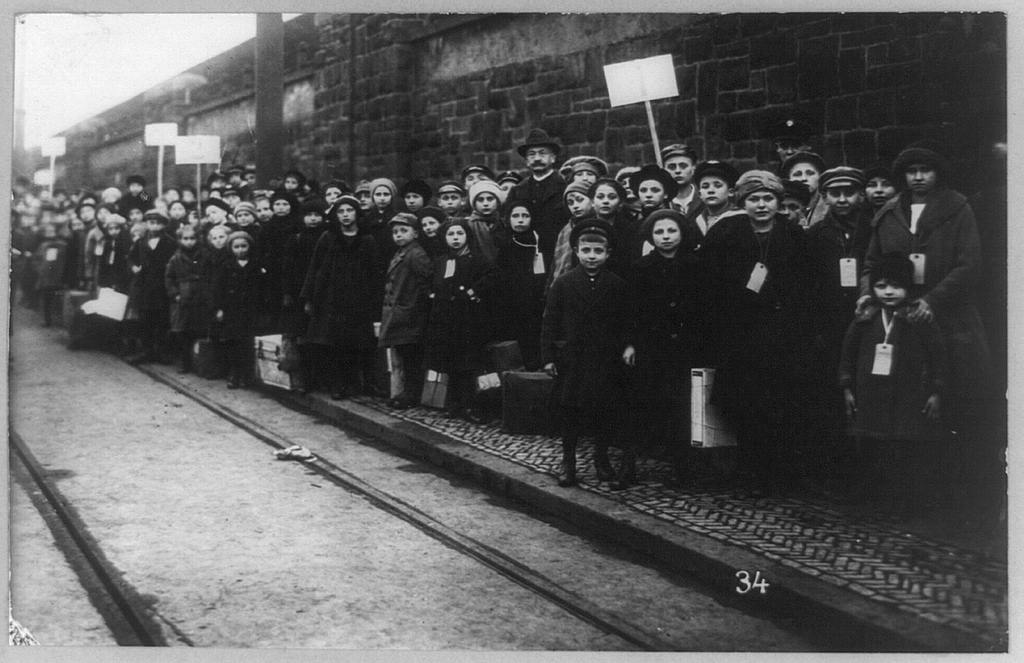The life of a 19th-century American industrial worker was hard. Even in good times wages were low, hours long, and working conditions hazardous. Little of the wealth that the growth of the nation had generated went to its workers. Moreover, women and children made up a high percentage of the work force in some industries and often received but a fraction of the wages a man could earn. Periodic economic crises swept the nation, further eroding industrial wages and producing high levels of unemployment.
At the same time, technological improvements, which added so much to the nation's productivity, continually reduced the demand for skilled labor. Yet the unskilled labor pool was constantly growing, as unprecedented numbers of immigrants - 18 million between 1880 and 1910 - entered the country, eager for work.
Before 1874, when Massachusetts passed the nation's first legislation limiting the number of hours women and child factory workers could perform to 10 hours a day, virtually no labor legislation existed in the country. It was not until the 1930s that the federal government would become actively involved. Until then, the field was left to the state and local authorities, few of whom were as responsive to the workers as they were to wealthy industrialists.
The laissez-faire capitalism Laissez-faire literally translates to "let do." Laissez-faire capitalism is an economic system in which the government leaves business and the economy alone, without regulation. that dominated the second half of the 19th century and fostered huge concentrations of wealth and power was backed by a judiciary that time and again ruled against those who challenged the system. In this, they were merely following the prevailing philosophy of the times. Drawing on a simplified understanding of Darwinian science, many social thinkers believed that both the growth of large business at the expense of small enterprise and the wealth of a few alongside the poverty of many was "survival of the fittest," and an unavoidable by-product of progress.
American workers, especially the skilled among them, appear to have lived at least as well as their counterparts in industrial Europe. Still, the social costs were high. As late as the year 1900, the United States had the highest job-related fatality rate of any industrialized nation in the world. Most industrial workers still worked a 10-hour day (12 hours in the steel industry), yet earned less than the minimum deemed necessary for a decent life. The number of children in the work force doubled between 1870 and 1900.
The first major effort to organize workers' groups on a nationwide basis appeared with the Noble Order of the Knights of Labor in 1869. Originally a secret, ritualistic society organized by Philadelphia garment workers and advocating a cooperative program, it was open to all workers, including African Americans, women, and farmers. The Knights grew slowly until its railway workers' unit won a strike against the great railroad baron, Jay Gould, in 1885. Within a year they added 500,000 workers to their rolls, but, not attuned to pragmatic trade unionism and unable to repeat this success, the Knights soon fell into a decline.
Their place in the labor movement was gradually taken by the American Federation of Labor (AFL). Rather than open membership to all, the AFL, under former cigar union official Samuel Gompers, was a group of unions focused on skilled workers. Its objectives were "pure and simple" and apolitical: increasing wages, reducing hours, and improving working conditions. It did much to turn the labor movement away from the socialist views of most European labor movements.
Nonetheless, both before the founding of the AFL and after, American labor history was violent. In the Great Rail Strike of 1877, rail workers across the nation went out in response to a 10-percent pay cut. Attempts to break the strike led to rioting and wide-scale destruction in several cities: Baltimore, Maryland; Chicago, Illinois; Pittsburgh, Pennsylvania; Buffalo, New York; and San Francisco, California. Federal troops had to be sent to several locations before the strike was ended.
Nine years later, in Chicago's Haymarket Square incident, someone threw a bomb at police about to break up an anarchist rally in support of an ongoing strike at the McCormick Harvester Company in Chicago. In the ensuing melee, seven policemen and at least four workers were reported killed. Some 60 police officers were injured.
In 1892, at Carnegie's steel works in Homestead, Pennsylvania, a group of 300 Pinkerton detectives the company had hired to break a bitter strike by the Amalgamated Association of Iron, Steel, and Tin Workers fought a fierce and losing gun battle with strikers. The National Guard was called in to protect non-union workers and the strike was broken. Unions were not let back into the plant until 1937.
In 1894, wage cuts at the Pullman Company just outside Chicago led to a strike, which, with the support of the American Railway Union, soon tied up much of the country's rail system. As the situation deteriorated, U.S. Attorney General Richard Olney, himself a former railroad lawyer, deputized over 3,000 men in an attempt to keep the rails open. This was followed by a federal court injunction against union interference with the trains. When rioting ensued, President Cleveland sent in federal troops, and the strike was eventually broken.
The most militant of the strike-favoring unions was the Industrial Workers of the World (IWW). Formed from an amalgam of unions fighting for better conditions in the West's mining industry, the IWW, or "Wobblies" as they were commonly known, gained particular prominence from the Colorado mine clashes of 1903 and the singularly brutal fashion in which they were put down. Influenced by militant anarchism and openly calling for class warfare, the Wobblies gained many adherents after they won a difficult strike battle in the textile mills of Lawrence, Massachusetts, in 1912. Their call for work stoppages in the midst of World War I, however, led to a government crackdown in 1917 that virtually destroyed them.
Source Citation:
"An Outline of American History," United States Information Agency. https://usa.usembassy.de/etexts/history/ch8.htm#struggles.




